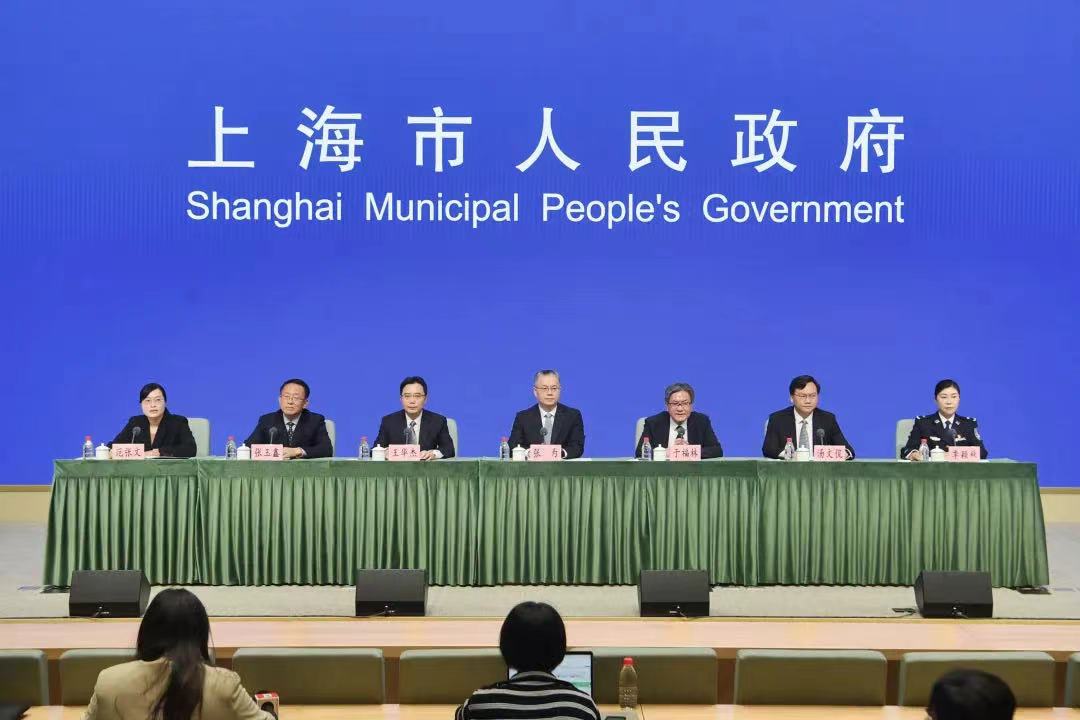At the press conference of Shanghai Municipal Government held on October 13th, Zhang Wei, Member of the Standing Committee of CPC Shanghai Municipal Party Committee and Vice Mayor of Shanghai Municipal Government, introduced the new round of “White Paper on Shanghai’s Transportation Development”. Yu Fulin, Chairman of Shanghai Municipal Transportation Commission, Wang Huajie, Vice Chairman of Shanghai Municipal Development and Reform Commission, Tang Wenkan, Vice Chairman of Shanghai Municipal Commission of Economy and Informatization, Zhang Yuxin, Deputy Director of Shanghai Municipal Planning and Resources Bureau, and Ji Yingqiu, Deputy Head of the Traffic Police Corps of Shanghai Municipal Public Security Bureau, attended the conference and answered questions from reporters.

In response to a reporter's question, Mr. Tang mentioned said that with the goal of digitalization and low carbon, Shanghai will build a smart and green transportation system in an all-round way.
Concerning digitalization, first of all, make every effort to promote the coordinated construction of vehicles and roads. The latest statistics shows that Shanghai has launched 1,299 kilometers of roads for testing intelligent networked vehicles. 110 kilometers of vehicle-road collaborative roads have been built, and 280 kilometers will be added in the near future. The vehicle-road collaborative rate of backbone roads has reached 100% in key areas such as Anting at Jiading District, Lingang Production Town Integration Zone and Jinqiao at Pudong New Area, in order to operate more than 10 collaborative application scenarios of "vehicle, road, network and cloud" such as unmanned bus and unmanned distribution.
Second, accelerate the development of intelligent networked automobile terminals. Strive to create more than three brands with Shanghai characteristics by 2025, and launch more than 10 popular products with a total output of RMB500 billion. Cars with auxiliary automatic driving function (L3) will account for over 70% of new car production. Cars with advanced automatic driving technology (L4) will be applied in logistics, transportation, sanitation and passenger transport.
Third, fully drive the integration of transportation services. Deepen the construction of the Mobility as a Service (MaaS) system, promote the "three-in-one" of Shanghai QR Code, bus code and Metro code, provide "one-code access" service for citizens' public transportation, and facilitate the establishment of an integrated mobility ecosystem in the Yangtze River Delta. Improve Shanghai's public parking information platform and realize the "one-stop access" of parking services. At present, it has been connected to 4,700 parking lots and 1 million public parking spaces across the city, and it is planned to cover all municipal 3A hospitals by the end of the year. Promote the application of "one-click taxi calling" to help the elderly call taxis. Currently, 500 points have been completed, and the coverage will be expanded in the future.
And fourth, strengthen institutional guarantee. Introduce norms and standards to promote the commercial trial operation of highly autonomous smart cars in specific scenarios. Relying on Pudong's legislative advantages, we will gradually realize the commercial operation of unmanned driving in specific areas.
As to low carbon, first of all, continue to drive the development of new energy automobile industry. By 2025, the annual output of new energy vehicles in Shanghai is expected to exceed 1.2 million, and the output of new energy vehicles will exceed RMB350 billion, accounting for more than 35% of the output of Shanghai's automaking industry.
Second, strengthen the popularization and application of new energy vehicles. In 2025, pure electric vehicles accounted for more than 50% of newly purchased vehicles, and new energy vehicles such as buses and taxis accounted for more than 80%. Encourage the demonstration application of hydrogen fuel cells in the fields of public transportation and sanitation and strive to reach the size of 10,000 vehicles by 2025.
Third, improve supporting infrastructure. Expand the sizee, operation quality and service convenience of charging and replacing facilities. In 2025, 760,000 charging piles and 300 power stations will be built, and the ratio of vehicles to piles will be no higher than 2:1. Moderately advance the layout of hydrogen refueling stations, and build and put into use more than 70 hydrogen refueling stations of various types to achieve full coverage of key application areas.
And fourth, deepen policy guidance. Introduce a series of policies such as special fund management measures for fuel cell vehicles, special planning for hydrogen refueling stations, and recycling of power batteries to support the innovation and development of the new energy automobile industry. Continue to promote the application of new energy vehicles and introduce special policies to encourage the purchase and use of new energy vehicles.







